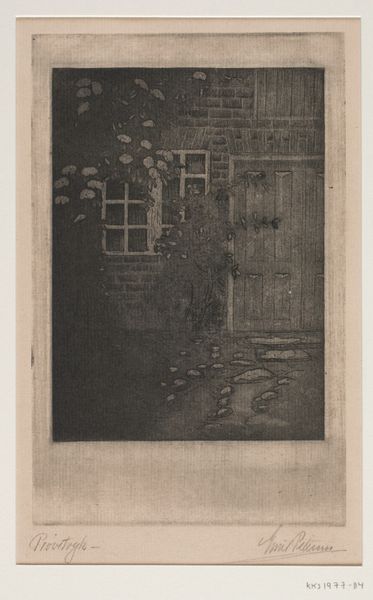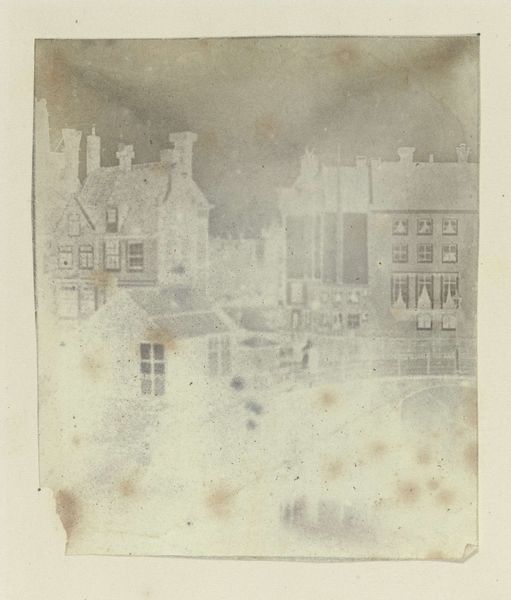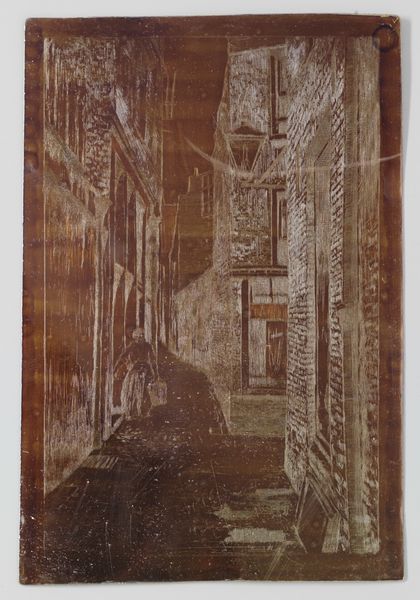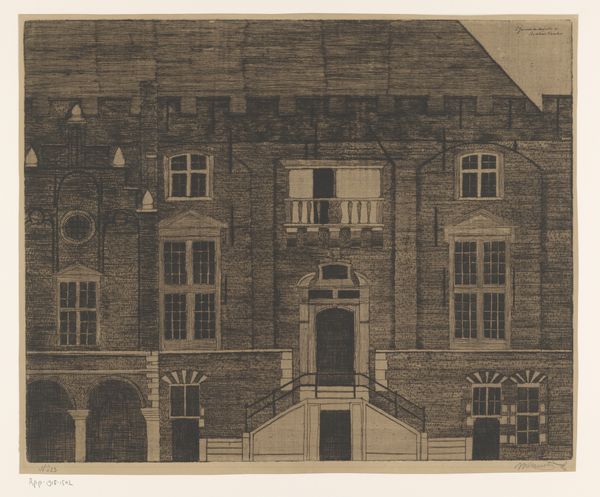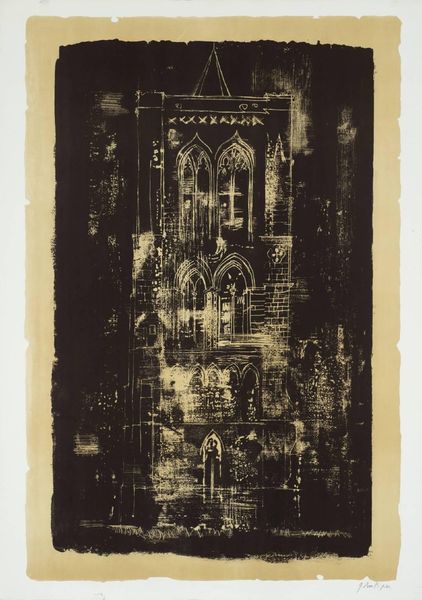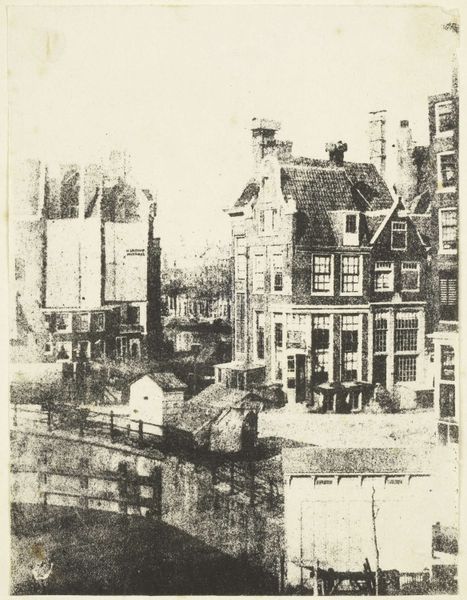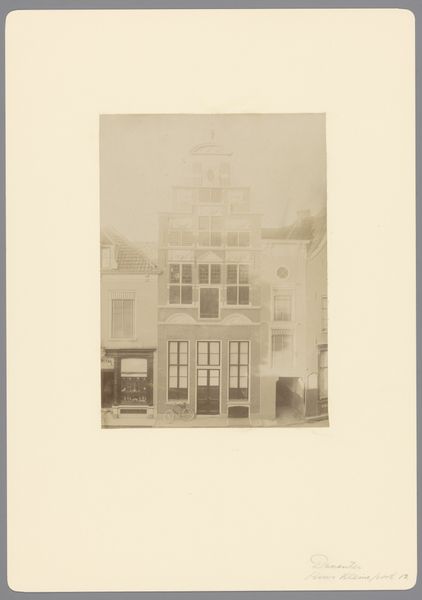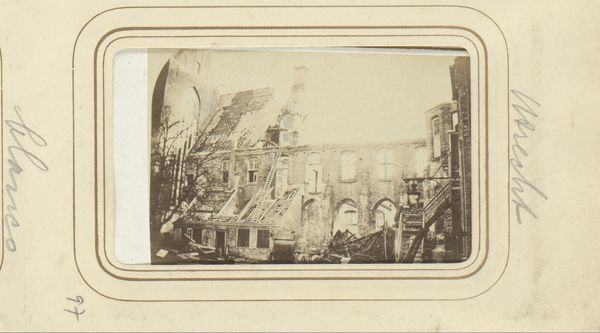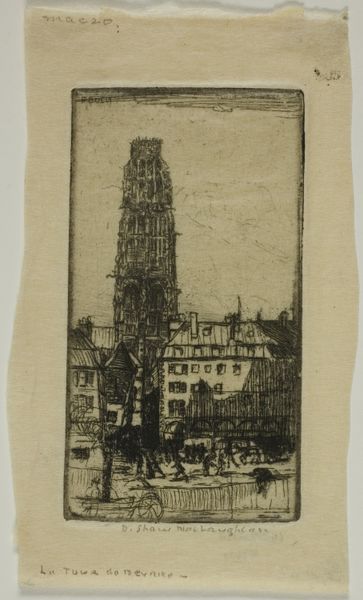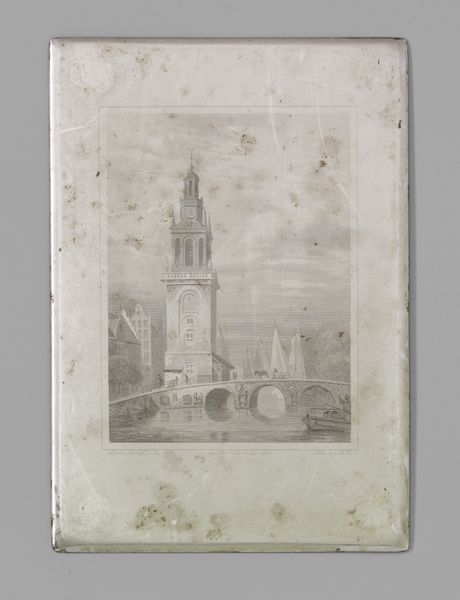
drawing, pen
#
drawing
#
pen
#
cityscape
#
realism
Dimensions: height 353 mm, width 222 mm
Copyright: Rijks Museum: Open Domain
Curator: We are standing before "Straat te Delft met het stadhuis" by Willem Adrianus Grondhout. Executed in pen and ink between 1888 and 1931, this drawing offers a snapshot of daily life in Delft, showcasing the iconic stadhuis. Editor: The monochrome palette immediately gives me a sense of faded memory, a time capsule of sorts. It’s haunting, almost like a ghost imprint of a once-bustling street scene. Curator: Grondhout's choice of a stark medium like pen and ink certainly contributes to this effect. Delft, historically known for its ties to the Dutch East India Company, and its pivotal role in the burgeoning merchant class of the time, has always been a hotbed of socio-political tension in The Netherlands. Editor: Absolutely. Beyond the documented socio-economics, the towering stadhuis becomes a symbol of civic power and identity for the inhabitants. Notice how the buildings lean towards it, framing it not only architecturally but also ideologically. Curator: Precisely! And look at the people – they are depicted with incredible attention to detail, suggesting an emphasis on both the individual and the collective experiences. Are they representative of the intersectionality within the social stratification that prevailed? One must consider how economic opportunities would have shaped access, mobility, and even visibility for different groups in that specific urban setting. Editor: The pen-work carries psychological weight, a quiet observation with the use of symbolism of Delft and its architectural history as symbols. The street and the church evoke a timeless dialogue about community, its foundation of strength and faith through the years. Curator: Reflecting on Grondhout's work, I am struck by the way he uses everyday subject matter to offer broader commentaries. This simple street scene provides an access point into critical discourses regarding the social, political, and economic climates that shaped the history of the Netherlands. Editor: For me, it leaves me pondering how, despite time’s relentless march, symbols can maintain and continue to evoke echoes of societal experiences, binding us to our shared past in ways both seen and unseen.
Comments
No comments
Be the first to comment and join the conversation on the ultimate creative platform.


